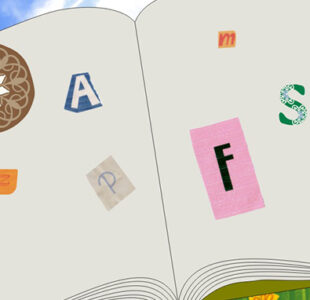- No Comment
Paper clip ideas and dentistry
Root canals are a common dental procedure performed to treat infected or damaged teeth. During the procedure, the dentist removes the infected or damaged pulp from the inside of the tooth and replaces it with a filling material. One tool that is sometimes used in this procedure is a paperclip. Paperclips are not commonly used in root canals, but one of the paper clip ideas serve as a helpful tool for dentists in certain situations.
Paper clip ideas, such as this one, can be used to help guide the dentist in finding the root canal and determining its shape. This is especially helpful in cases where the root canal is difficult to access, such as when it is curved or angled. By using a paperclip, the dentist can get a better idea of the canal’s shape, which can help them to perform the procedure more accurately.
Another advantage of using this one of many paper clips ideas in root canals is that they are inexpensive and disposable. This means that there is no need to sterilize them after each use, which can save time and reduce the risk of infection.
It’s important to note that this paper clip ideas should only be pondered over and used by trained and licensed dentists, and should not be used as a DIY tool. Additionally, not all dentists use paperclips in root canals, as other tools and techniques may be preferred.
Root canals are a critical dental procedure that is performed to save a damaged or infected tooth. The process involves removing the damaged or infected pulp from the inside of the tooth and filling it with a material that helps to prevent further infection. Over the years, many different tools and techniques have been developed to make root canal procedures as effective and efficient as possible.
One such tool is the humble one of many possible paper clip ideas. Although paper clip ideas such as this one are not commonly used in root canal procedures, they can be an invaluable tool for dentists in specific circumstances. Here are a few ways that paperclips can be used in root canal procedures:
- Guiding the dentist: Paperclips can be used to help guide the dentist in locating the root canal and determining its shape. This is especially helpful when the root canal is difficult to access, such as when it is curved or angled. By using a paperclip, the dentist can get a better understanding of the canal’s shape, which can help them to perform the procedure more accurately.
- Cost-effective and disposable: Paperclips are inexpensive and disposable, which means that there is no need to sterilize them after each use. This can save time and reduce the risk of infection. Additionally, paperclips are readily available, making them a convenient tool for dentists to use.
- Easy to manipulate: Paperclips are flexible and can be easily manipulated to reach hard-to-access areas of the tooth. This can help the dentist to get a better look at the root canal and make the procedure easier and more accurate.
It’s important to note that paper clip ideas should only be used by trained and licensed dentists. They should not be used as a DIY tool, as performing a root canal procedure requires specialized knowledge and skills. Additionally, not all dentists use paperclips in root canal procedures, as other tools and techniques may be preferred.
Here’s an example of one of many paperclip ideas that might be used in a root canal procedure:
Imagine a patient has a molar with a damaged root canal. The dentist determines that the root canal is difficult to access because it is angled and curved. In this situation, the dentist might use a paperclip to help guide them in locating and shaping the root canal.
The dentist would begin by carefully inserting a sterilized paperclip into the damaged tooth. They would then use the flexibility of the paperclip to maneuver it into the root canal and get a better understanding of its shape. By using the paperclip as a guide, the dentist can more accurately locate and shape the root canal, making the procedure easier and more effective.
Once the root canal has been properly shaped, the dentist would remove the paperclip and proceed with the rest of the root canal procedure, filling the tooth with the appropriate material to prevent further infection.
This is just one example of how a paperclip might be used in a root canal procedure. It’s important to note that not all dentists use paperclips in root canal procedures and that other tools and techniques may be preferred. The best way to determine what tools and techniques will be used in your root canal procedure is to consult with your dentist.
In conclusion, paperclips may not be the most common tool used in root canal procedures, but they can be a helpful tool for dentists in certain situations. If you have questions about a root canal procedure, it’s best to consult with your dentist. They will be able to provide you with more information on the tools and techniques that will be used and why. While paperclips are not a standard tool in root canal procedures, they can be a helpful tool for dentists in certain situations. If you have questions about a root canal procedure, it’s best to consult with your dentist.
Related Posts

5 Stories about Paper Clips that will…
Have you ever given thought to how frequently we take paper clips

Paperclips in History: The Norwegian Resistance Movement
During World War 2, Nazi Germany conquered Norway, and the country's populace
